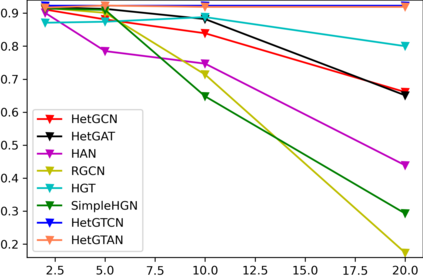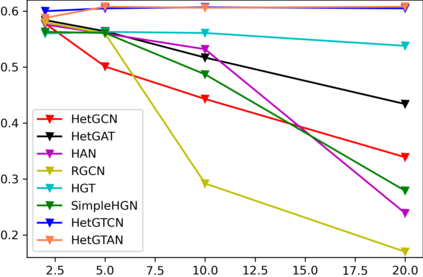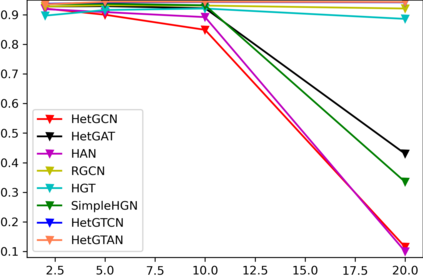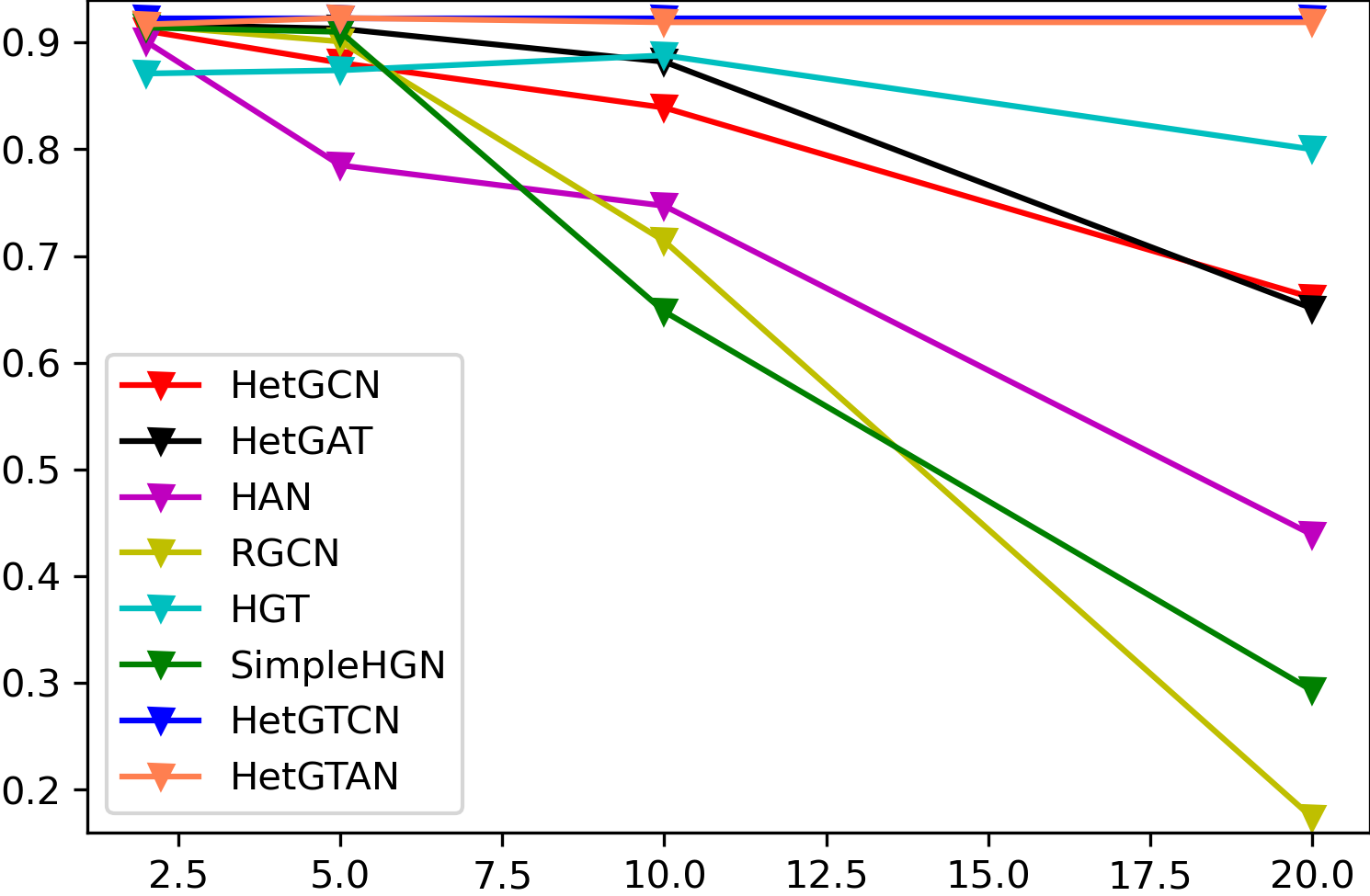Heterogeneous graph neural networks (HGNNs) have attracted increasing research interest in recent three years. Most existing HGNNs fall into two classes. One class is meta-path-based HGNNs which either require domain knowledge to handcraft meta-paths or consume huge amount of time and memory to automatically construct meta-paths. The other class does not rely on meta-path construction. It takes homogeneous convolutional graph neural networks (Conv-GNNs) as backbones and extend them to heterogeneous graphs by introducing node-type- and edge-type-dependent parameters. Regardless of the meta-path dependency, most existing HGNNs employ shallow Conv-GNNs such as GCN and GAT to aggregate neighborhood information, and may have limited capability to capture information from high-order neighborhood. In this work, we propose two heterogeneous graph tree network models: Heterogeneous Graph Tree Convolutional Network (HetGTCN) and Heterogeneous Graph Tree Attention Network (HetGTAN), which do not rely on meta-paths to encode heterogeneity in both node features and graph structure. Extensive experiments on three real-world heterogeneous graph data demonstrate that the proposed HetGTCN and HetGTAN are efficient and consistently outperform all state-of-the-art HGNN baselines on semi-supervised node classification tasks, and can go deep without compromising performance.
翻译:近三年来,大部分现有的HGNNN都属于两类,其中一类是基于元病的HGNN, 一类是基于元病的HGNN, 需要领域知识才能手工艺元病, 或消耗大量的时间和内存来自动构建元病体。 另一类不依赖元病建构。 将同质同质同质的相异图形神经网络(Conv-GNNN)作为主干线, 通过引入点型和边缘型的深度依赖参数将其扩展至不同图形。 不论对元病依赖性,大多数现有的HGNNNNNS使用浅度的Conv-GNNN, 诸如GCN和GAT, 来汇总邻居信息, 并且可能缺乏从高阶邻里获取信息的能力。 在这项工作中,我们提议了两种复合图形树网络模型:异质的图树共通网络(HetGTCN)和Hetrogenyalgotion 树注意网络(HetGTAN), 网络不依赖元病原样路径来将GNF-NF-NB-NED-NG-NG-NG-NG-NF-NT-NT-NT-NG-NG-NG-NG-NT-NG-NT-NT-NT-NT-NT-NT-ND-NT-NT-NT-NT-NT-NT-NT-NT-NG-NT-NT-NG-NT-NT-NT-NT-NT-NT-S-S-NT-S-S-NT-NT-N-N-N-N-NT-S-N-N-N-N-N-N-N-N-N-N-N-N-N-N-N-N-NG-NG-N-N-N-N-N-N-N-N-N-N-N-N-N-N-N-N-N-N-N-N-N-N-N-N-N-N-N-N-N-N-N-N-N-N-N-N








